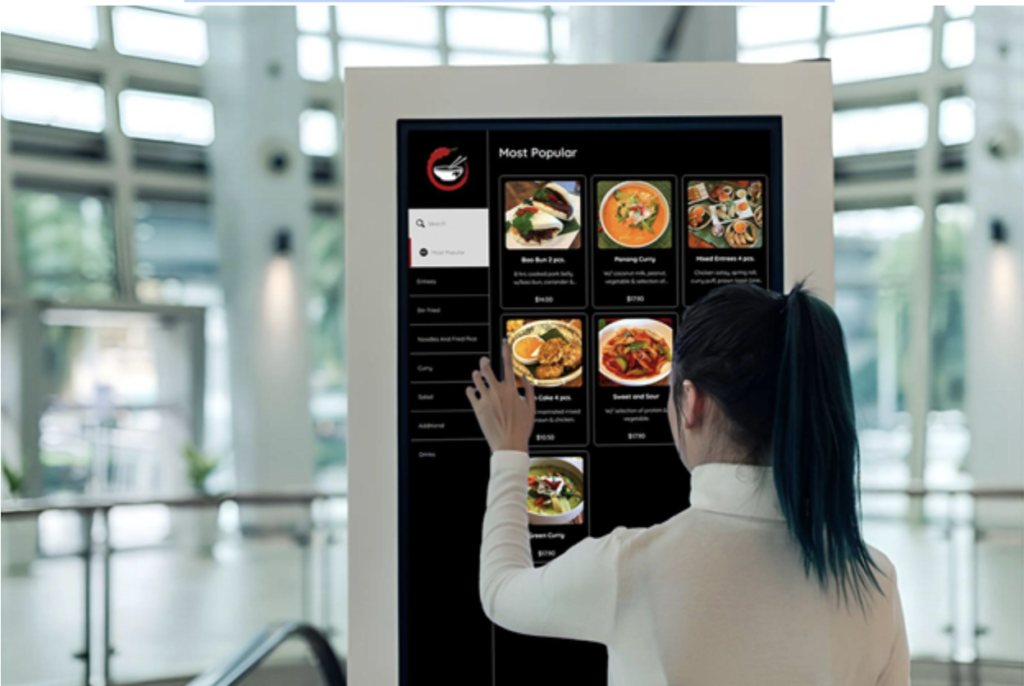With an extensive range of specialised hardware and software available, interactive kiosks are increasingly becoming crucial to an organisation’s overall marketing strategy. They make it easier than ever to give entertainment and information. Interactive kiosks used to be little more than upscale phone booths. However, as kiosk software has improved, many sectors have accepted kiosks as workable touchscreen solutions that can improve user experience while creating an engaging solution for clients. With an emphasis on their uses, benefits, and future potential, this blog examines how touchscreen kiosks can enhance user experience engagingly and educationally.
Overview of Touchscreen Kiosks
A touchscreen kiosk is a self-contained terminal with a touchscreen interface that allows people to engage with digital content and perform various functions.
Serving as conventional standalone units, these kiosks are strategically positioned to offer help, information, or self-service choices in various public spaces, such as hotels, shops, banks, hospitals, and airports. Touchscreen kiosks eliminate the need for traditional keyboards and mice by offering consumers an intuitive interface.
How Does Touch Screen Kiosk Work?
Resistive or capacitive touch screen technology is used in touch screen kiosk to recognise and react to user input. Capacitive touch screens employ the electrical characteristics of the human body to detect a touch, whereas resistive touch screens use pressure to detect touch locations.
When a user uses their finger to drag, swipe, or tap on the screen, the kiosk’s software interprets the input and performs the appropriate action. Customising the kiosk’s software can provide numerous functionalities, such as buying things, completing paperwork, looking through websites, printing tickets, etc.
The Benefits of Touch Screen Kiosk
Touchscreen kiosks are valuable for companies in various industries due to their many advantages.
They have completely changed how companies communicate with their clients. These cutting-edge gadgets offer an unmatched degree of efficiency and ease, improving the general client experience. Touch screen kiosks provide rapid access to information and services, whether you’re exploring product catalogues, checking flight information, or completing an order.
Touch screen kiosks save consumers time and do away with the requirement for human assistance in straightforward transactions. Customers now have greater control over their interactions thanks to this simplified experience, enabling them to make decisions independently of other influences. Touch screen kiosks are helpful for various tasks, including purchasing, checking into a flight, and retrieving critical information to aid you with a smooth and user-friendly interface.
Part A: Increasing Customer Interaction and Engagement
Touchscreen kiosks are transforming the way companies interact with their clientele. Unlike conventional static displays or human interactions, these kiosks offer a dynamic and interactive experience.
1) Interactive Content:
Videos, infographics,, and animations are just a few examples of the interactive material that touchscreen kiosks can display. This dynamic presentation draws users in and keeps them interested. Touchscreen kiosks, for instance, can display interactive exhibitions in museum settings where visitors can examine historical events, examine intricate 3D models, or watch brief films. This enhances the visit’s engagement and informational value.
2) Personalised Experience:
These kiosks can provide a personalised experience by modifying content in response to customer input. Users can submit specific information, answer quizzes, or set preferences to obtain content specifically tailored to them. This personalisation in retail settings can result in tailored product recommendations, exclusive deals, and a more enjoyable shopping experience.
3) Usability:
Contemporary touchscreen kiosks have user-friendly interfaces that make navigating around them easy. Large symbols, touch-responsive features, and clear directions guarantee that even individuals with no technical knowledge may use them efficiently. Accessibility is essential to maximise user happiness and guarantee that a large audience can use the technology.
Part B: Optimising Processes and Increasing Productivity
Touch screen kiosks provide businesses and organisations with several operational benefits that increase productivity and save costs.
1) Automated Services:
Touchscreen kiosks can automate many tasks, including food ordering, payment processing, and ticketing and check-in procedures. Because less staff interaction is required due to this automation, workers may concentrate on more challenging jobs and provide faster overall service.
2) Data Collection:
Kiosks can be used to obtain user behaviour and preference data. Through analysis, one can learn more about the target audience’s needs, enhance service offerings, and develop more effective marketing plans. A retail establishment, for instance, can use information from kiosks to determine which products are in demand and then modify inventory appropriately.
3) Accuracy and Consistency:
Kiosks offer more accurate service and are less likely to make mistakes than human employees. This dependability guarantees that users receive the same quality of service no matter when or where they engage with the kiosk. For instance, at fast-food establishments, order kiosks provide precise order taking, minimising the possibility of errors arising from spoken instructions.
In summary
Touchscreen kiosks are an intriguing example of how technology and user-centric design can come together, and they provide several advantages that improve and inform customer experiences. They are an excellent investment for companies and organisations in a variety of industries due to their capacity to inform, engage, and streamline operations. Touch screen kiosks’ potential will only increase as technology develops further, offering even more creative and significant solutions.
